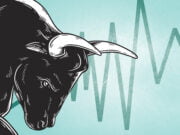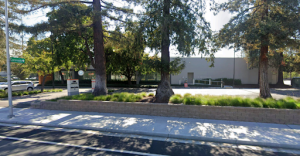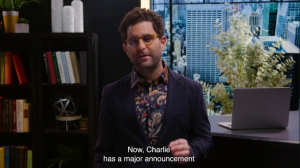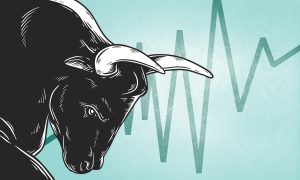Speaker 1 (00:00):
Hi everyone. I’m Tim Melvin, and welcome back to a better way to wealth. And one of the things I’m always asked about is why don’t I just, just buy some of these big blue-chip stocks say, I dunno, Coke, IBM, general mills, and just collect those big fat dividends after all they, you know, a lot of these are what they call dividend aristocrats that raised their dividend all the time and the press and everything says, this is just a wonderful strategy guys. 98% of the time, it’s just a crappy idea. Okay. You don’t buy blue chip stocks during ordinary times. You absolutely do not buy blue chip stocks after something like the epic rally we’ve seen since the Corona virus bottom and pretty much rising stock prices for a decade, you don’t buy blue chip stocks. Here’s why, let me break this down for you real quick.
Speaker 1 (00:49):
Okay. There’s two couple of sources of returns that will drive a stock. You can look at this and add these numbers up. You get an idea of what this stock might do for you over the next five to 10 years. So you’ve got the dividend cash dividend. You’ve got the earnings growth rate, and then you’ve got the multiple expansion. And all that is is how much does the PE ratio go up or down over that period of time? It goes up, it adds return. It goes down it subtracts return. So if you get one of these big stocks, that’s doing 3% dividend, but only has a 3% dividend growth rate or sorry, earnings growth rate over the next five to 10 years. And the analysts make estimates about that. And they’re usually pretty accurate. We look at that, that’s a 6% return.
Speaker 1 (01:31):
That’s not great, but now one of the PE ratio is the highest it’s ever been. And you have to feel that that’s going to come back to normal because historically it always has. So maybe that’s going to take 40 or 50% of that return away. Now you’ve got a stock, you’ve got all the risks of owning stocks, and you’ve got maybe a 3% annual return. That’s not going to do a lot for you guys. And a lot of these companies have raised the dividend year, end year out forever and ever, and ever. And that’s wonderful. Except at this point, they’re raising the dividend tiny amounts as marketing. They want to stay on that list of companies that have raised their dividends for 25 or 50 years in a row. They don’t want to fall off. We recently saw Exxon when oil prices were low, go through all kinds of machinations to keep the dividend and not cut it so that they would fall off. Some of those lists, they pulled it off, but it was close. It was just barely.
Speaker 1 (02:32):
You know, if you look at some of these big high growth stocks, I mean, high, multiple stocks that are paying big dividends, you know, you barely broken even over the last 10 and even 20 years owning a portfolio of these things has not provided the type of return. That’s going to get you to the type of retirement that you want to live. We’ve got to look at a different
Speaker 2 (02:52):
Way of doing this.
Speaker 1 (02:55):
I want you to focus, not on dividends, not just cash dividends. Those are wonderful and nice, but they’re not the only thing that matters. What you want to know is how much money is the company giving back to shareholders in untold. So we got a cash dividend, but then stock buybacks and debt reduction are also forms of returning money back to the shareholders of the company. We’ll have a long discussion about our buybacks. Good, your bad another day. And the truth is they’re both, but buybacks done, right? Add a lot of that. You said what we want to look for. We’re going to look for stocks with what I call total shareholder yield of over 7%. That’s cash dividends that is stock buyback rate. How much stock have they bought back in the last year and how much did the debt decrease at a particular company?
Speaker 1 (03:47):
And these stocks, a portfolio of these has absolutely crushed the market by better than a two to one margin over the last two decades. That’s the type of return you want to see that can get you to the type of retirement that you want to have. So I’ve got a company for me to share one idea with you so that you get an idea of what this looks like. The stock is AECOM. That’s a C M on the New York stock exchange. So company, they don’t actually pay a cash dividend. They’ll all the return, 7% pluses endeavored, right? And stock buybacks. But this is okay, wonderful company. It’s going to grow at over 20% a year for the next five years. And probably beyond they do large scale construction management. Their single largest customer is the United States government. So when that infrastructure bill finally gets through Congress, wow, that money is going to pass right through this company’s hands.
Speaker 1 (04:42):
And guys, they are involved in everything, roads, bridges, energy, renewable energy, they’re involved in building all the things that are necessary for the automated and connected car of the future. To go from point to point to point to point, they’re going to be deeply involved in building the stations and infrastructure that makes that possible. They’re heavily involved in industrial real estate, which is an e-commerce and supply chain story. That’s going to grow at an incredible rate because e-commerce remember the pandemic sped up. E-Commerce adoption by about a decade. Now are an e-commerce where they thought we’d be in 2030, we’re already there real big demand for warehouse space. They’re very actively involved in that. So smart cities, infrastructure spending, you know, the, the, the driverless car, the connected car, all of this, these massive trends are going to be a huge beneficiary for Eiko going forward. This is the type of stock that can double triple and even quadruple the current price over the next five to 10 years and get you where you want to be financially. Forget the big dividend payers, cute story, no longer, the best way to build your wealth. Look for total shareholder yield, right growth opportunities. And that will get you where you want to be. I’m Tim, Melvin, and that’s a better way to wealth.
You might also like:
- A.I. Gamechanger Says “$2.50 Stock Set to Breakout Overnight”
- Mysterious Gold Leverage Just Announced
- Elon’s New A.I. Device is About to Shock the World
- Prepare Now Before This Looming $2 Trillion D.C. Shock
- Buy Elon Musk’s New $1 Play before June 30
- Write this ticker symbol down…
- The Crypto Melt-Up has Begun
- “A.I. is a Tidal Wave” – Here’s What to Buy
- Beware Executive Order 14067
- #1 AI Stock for 2024 and Beyond






















